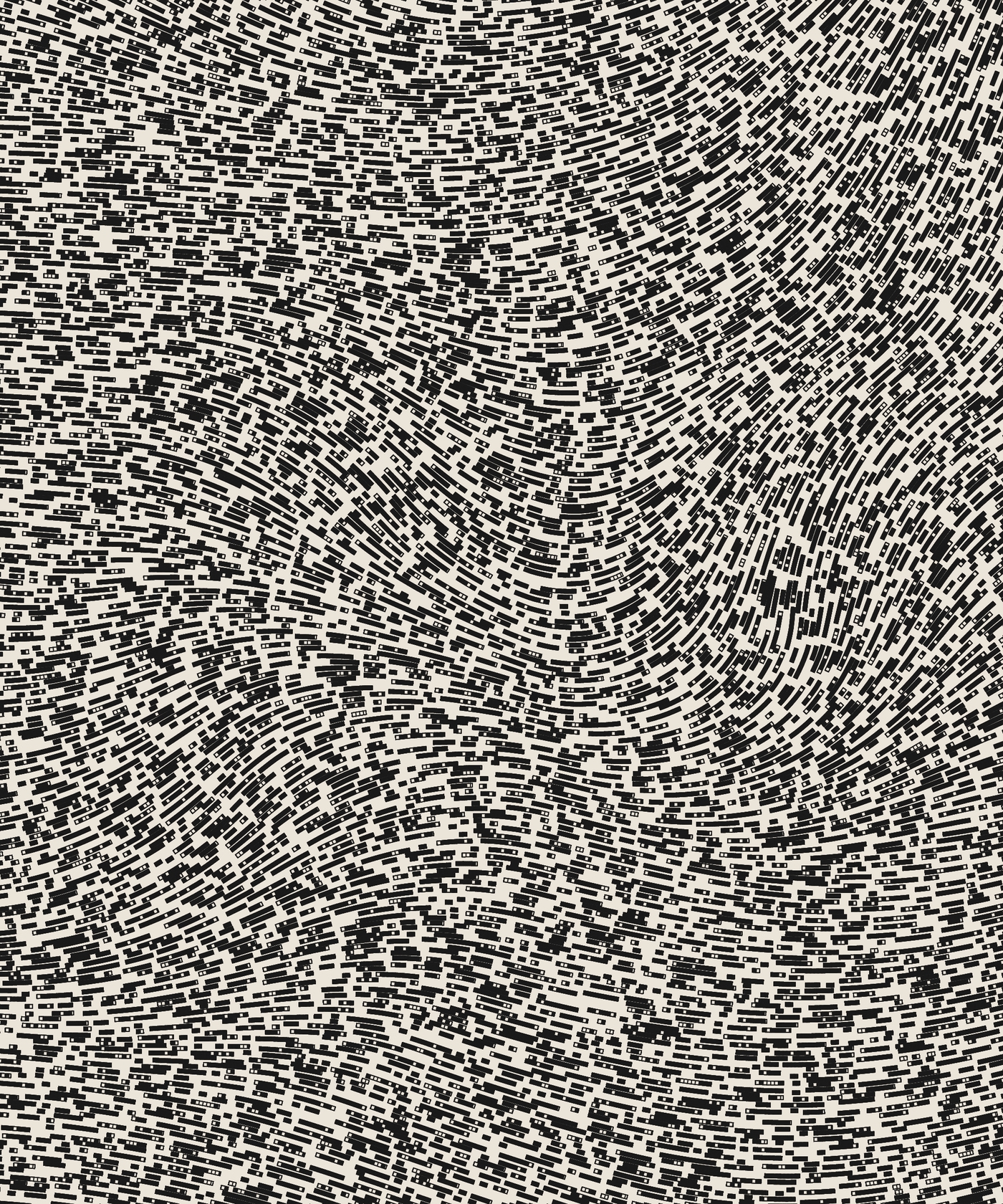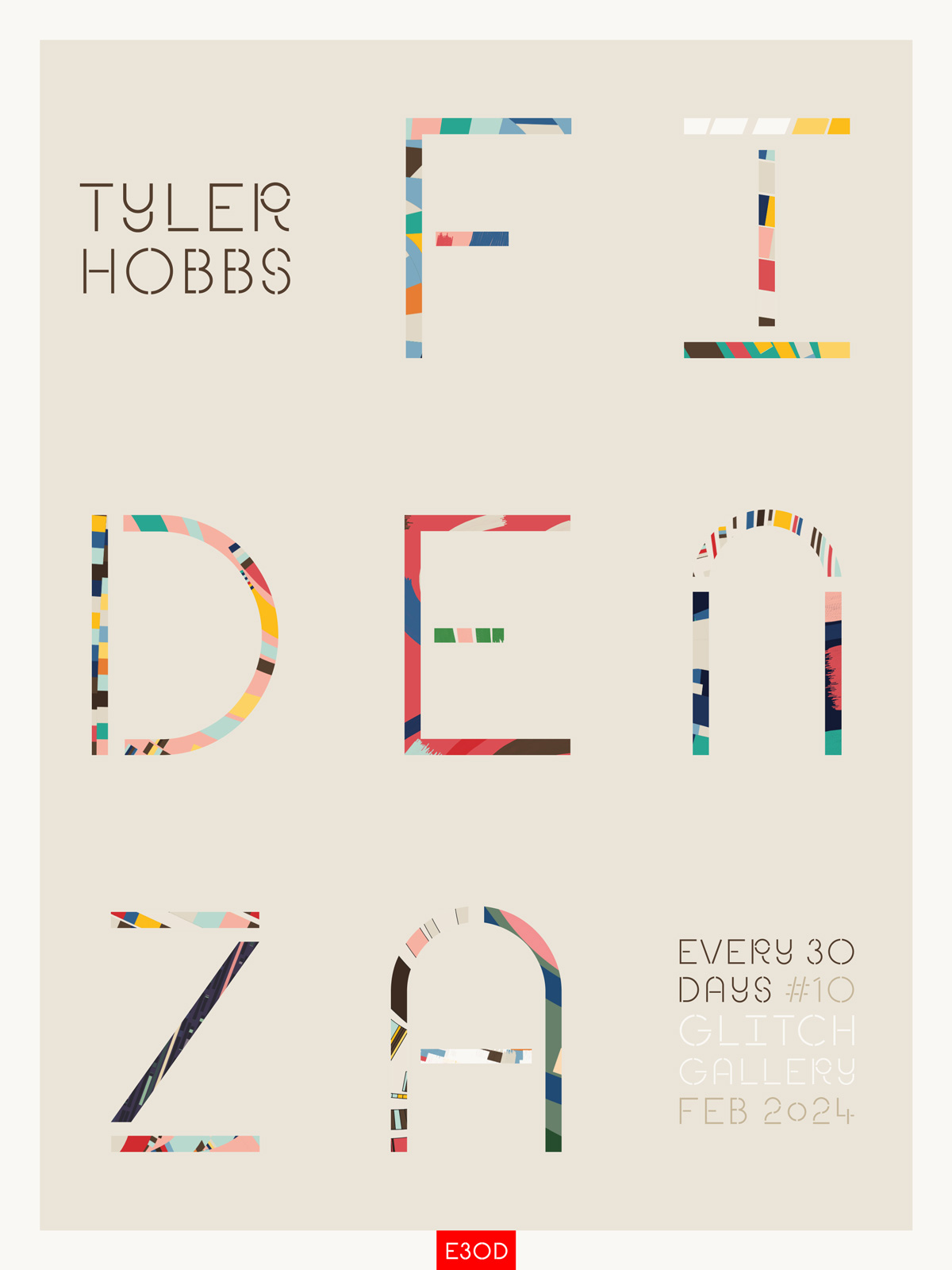In 2010, Tyler Hobbs graduated from The University of Texas with a Bachelor’s degree in Computer Science. A few months later, he landed a programming job working on an open-source, distributed database called Cassandra.
In his spare time Hobbs drifted toward the arts, naturally trying to involve programming into his artwork.
His early attempts included paintings of coding environments; at the time, Hobbs was unaware of the larger generative art movement, or the creative coders who had started to discuss and share algorithms with one another in online spaces.
Eventually, the question:
“I wonder if I can write a program that creates a painting?” 1
Hobbs narrowed his focus toward the constraints of process and system to paint an output space with code. First, with mathematical drawings by hand; then, by developing work over products like Matplotlib to create his first generative art pieces. In time, Hobbs discovered Processing (the Java-based programming language that allows users to code visual art) and its creator, Casey Reas. Hobbs began his journey educating himself on the history and techniques of the generative art movement.
Over the next few years, much like other generative artists of the decade, Hobbs’ practice relied on manual curation. Only a few outputs of an algorithm would be selected from hundreds, if not thousands, of an algorithm’s output space.
Everything changed with the creation of the Art Blocks platform.
On November 27th 2020, another Texas artist named Snowfro launched Art Blocks, the internet’s first marketplace for on-demand, on-chain, generative art.
For a small payment in ETH, generative art collectors could click a “mint” button that triggered a transaction on the Ethereum blockchain. The transaction hash was then referenced as a seed against an artist’s on-chain algorithm, populating a unique output. Up until the moment the execution of the transaction, both the artist and the collector would wait, in suspense, until the unique output would appear on the screen.
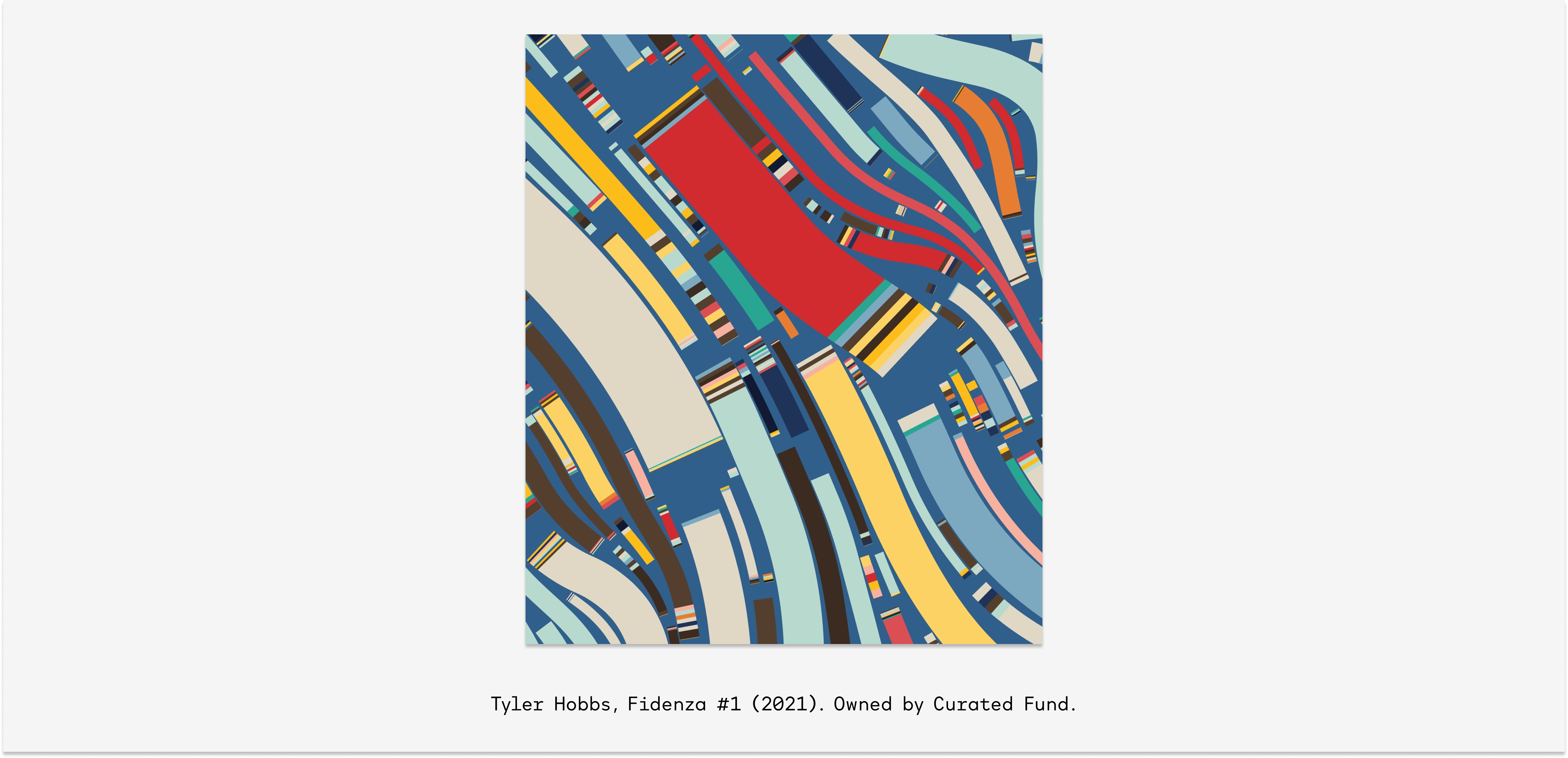
In Spring 2021, Hobbs came across the work of Dmitri Cherniak’s Ringers and Kjetil Golid’s Archetypes – two early Art Blocks collections. Within a few days, Hobbs applied for a release on Art Blocks, convinced it was a true long-form generative art challenge – a goal he had been working towards from the start.
On June 11, 2021, Hobbs launched Fidenza, a collection of 999 algorithmically generated works, based on an algorithm he had been developing for years. Today, Fidenza is widely considered to be one of the seminal on-chain generative art collections.
Injecting Randomness
Nature and machines are often pitted against one another – rooted in a view that the efficiency gains sought by humans run counter to the order of the natural world.
And yet, with any application of critical thinking, time and time again machine and nature prove to be ever exchanging and referencing the other, often down to the smallest unit of measurement.
Systems, sequencing, color – in nature, traits may appear random but often originate out of a larger plan. Beauty is a product of elegant mathematics.
.png)
Similarly, Fidenza may be understood as both an emergent product and a practice of finely-tuned mathematics — an intimate conversation between human and machine. The collection is symbolic of the way code can leverage rules-based systems to mirror the mysteries and mathematical properties of the natural world.
Fidenza’s core compositional principle lies in the flow field algorithm. The algorithm’s adaptability, allowing for adjustments in turbulence, curve lengths, and angles, exemplifies the type of granularity precision — and randomness — that can be achieved with code-based work.
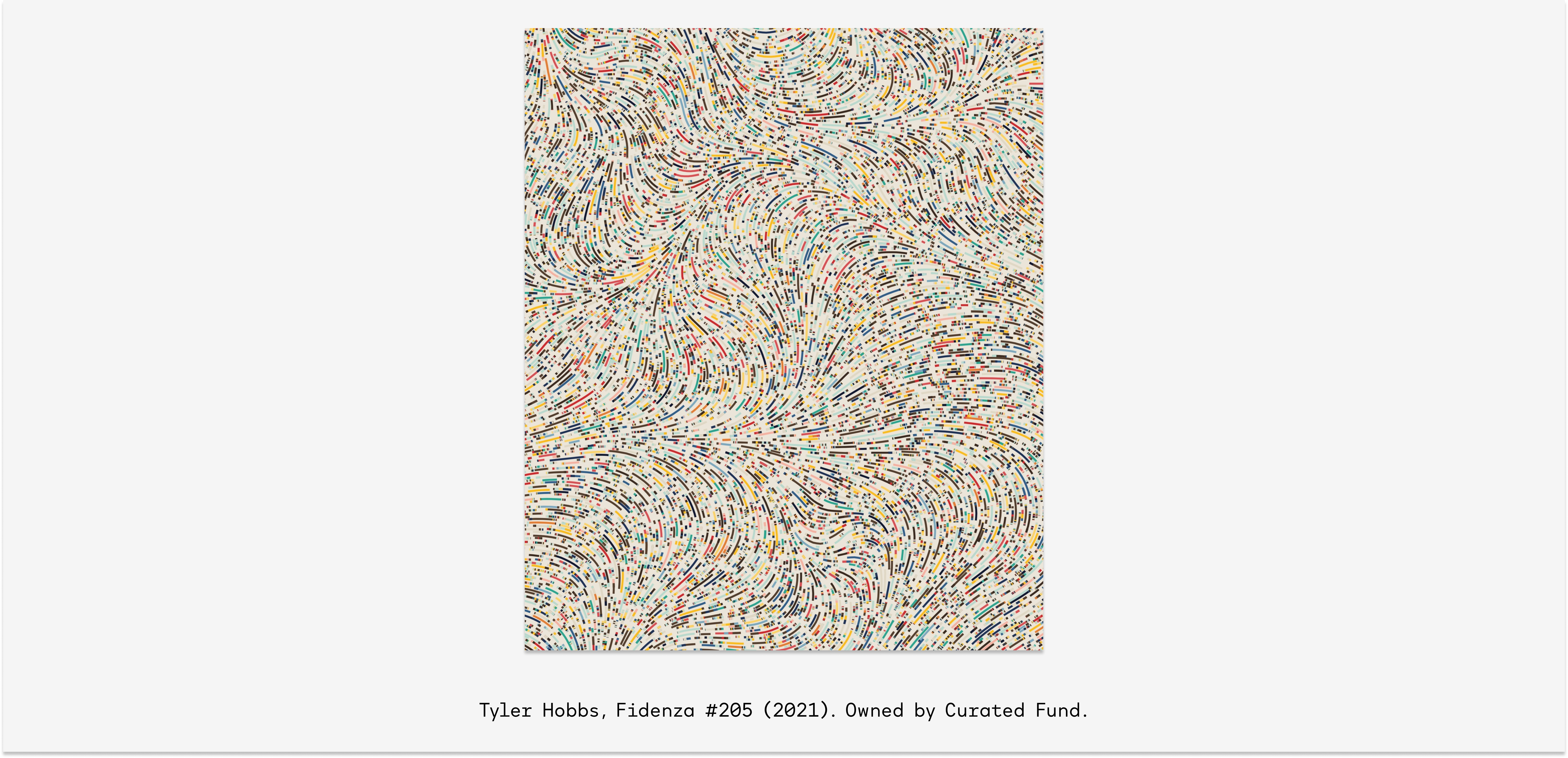
Each output is distinct – yet unmistakably part of a cohesive whole. Here, one can traverse expansive and minutely detailed worlds, encounter both gentle and tumultuous currents, and explore realms both vibrantly colorful and elegantly monochromatic.
Randomness is a key element in long-form generative art projects like Fidenza. The color palette, line shape and thickness, as well as the composition and curvature of Fidenza, are governed by a pseudo-random number that seeds the algorithm each time an output is minted. The design of Fidenza is aimed at “taming” chance to ensure reliable and cohesive quality, yet it provides sufficient latitude to produce a variety that ideally exceeds the predictable.
The constraint of probabilistic outcome was lightly followed even in the collection’s naming process. Fidenza is a small town in northern Italy with a population of 25,000. At the time of the collection’s creation, Hobbs had never visited – nor knew much – about the Italian town. Hobbs often used neutral town names, in order to avoid the influence on how the viewer might perceive the work. Finding nothing in his home state of Texas, Hobbs looked at a map of Italy and landed across the name.
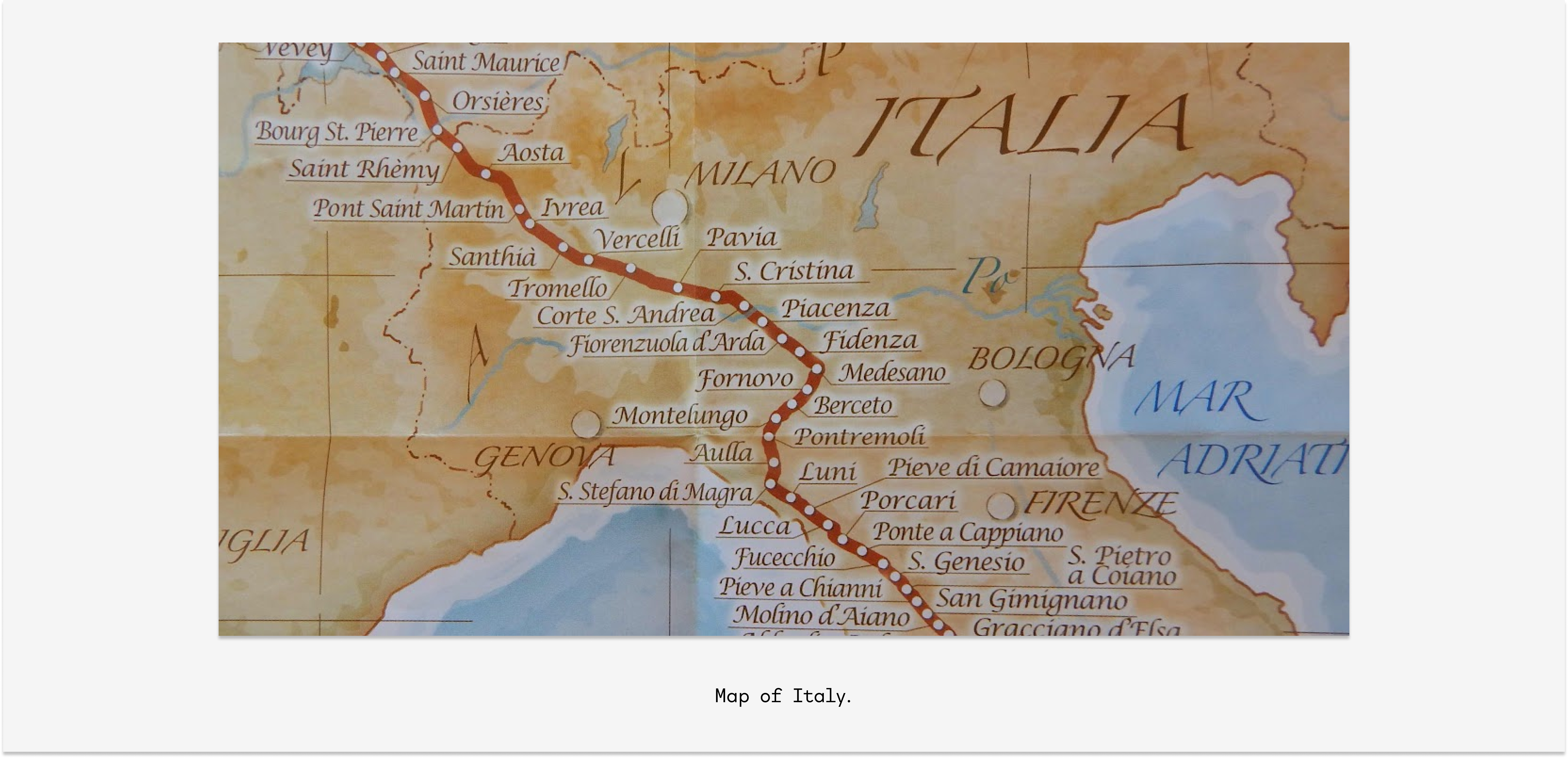
Fidenza’s Design Space
Operating across seven scales, Fidenza offers artists a spectrum of choices, from small to jumbo, each influencing the size and visual impact of generated shapes. The inclusion of special scales like uniform and micro-uniform adds a layer of creative control, allowing for the crafting of harmonious compositions.
Turbulence levels in Fidenza bring forth an interesting aspect of creative coding. Artists can manipulate the algorithm’s flow, introducing varying degrees of turbulence or opting for a turbulence-free outcome. This feature underscores the importance of coding not just as a tool but as a medium for artistic expression, enabling creators to shape the very essence of their visual narratives.
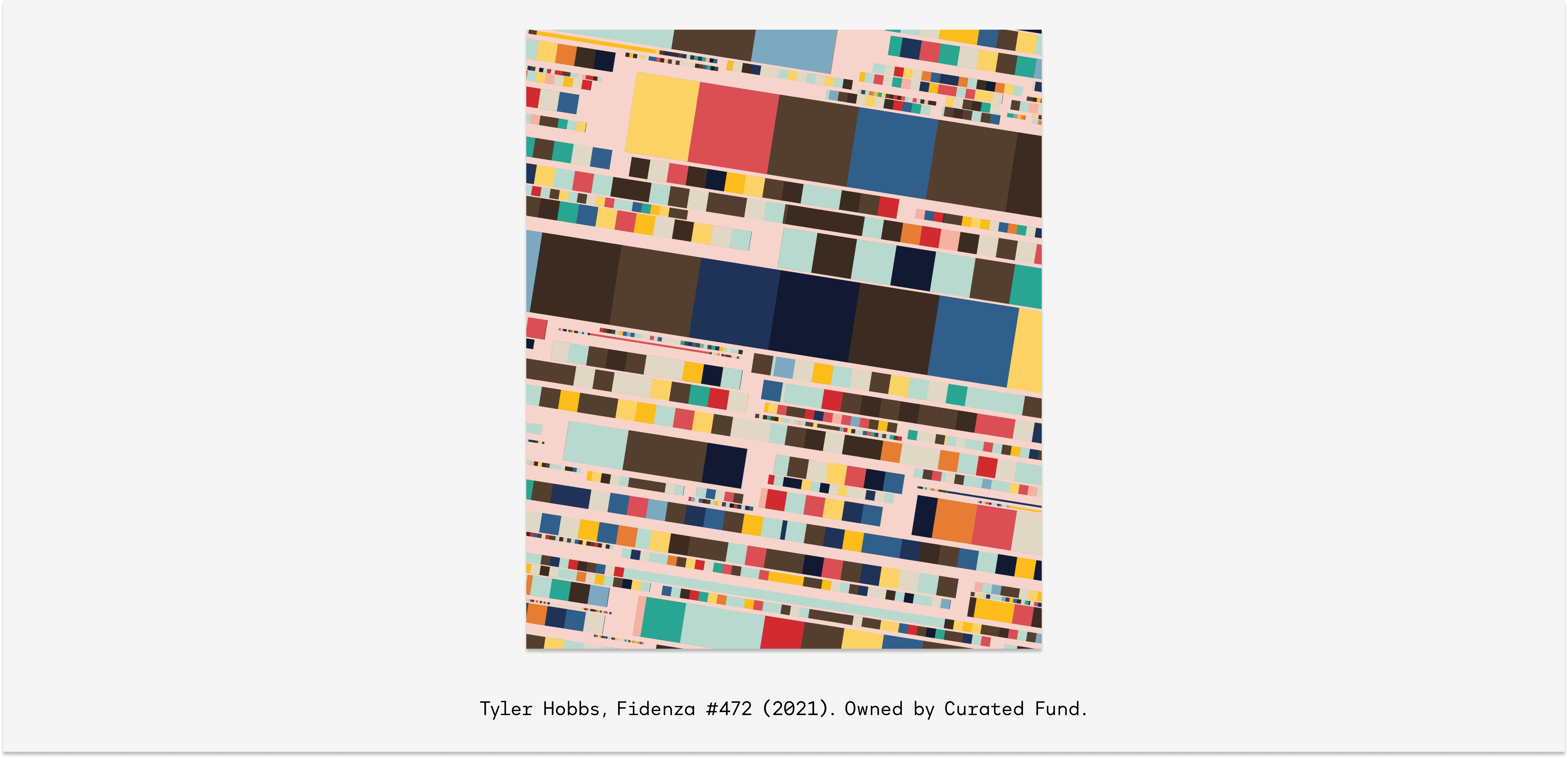
Exploring stroke styles and shape segments, Fidenza introduces features like Super Blocks, Outline, and Soft Shapes. These options inject distinct visual characteristics, providing artists with creative tools to define the graphic or painterly qualities of their compositions. The algorithmic choices made here reflect not just technical prowess but a deliberate push to empower artists with a rich palette of creative options.
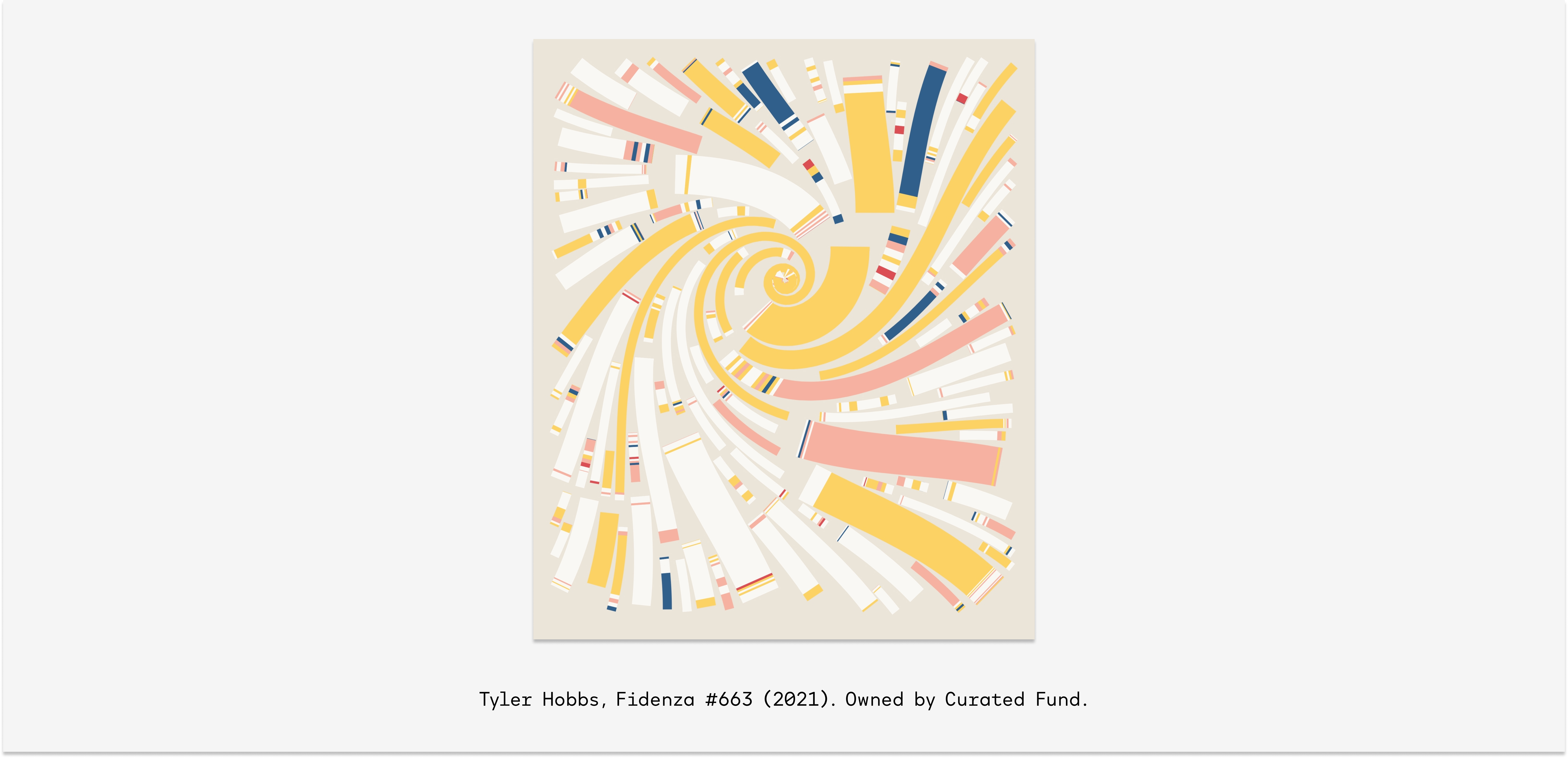
In the realm of sharp edges and spirals, Fidenza transcends the traditional boundaries of generative art. The “Shape Angles: Sharp” feature and the ability to transform the flow field into a spiral showcase the algorithm’s capacity to introduce geometric precision or deviate into more experimental visual territories. This aligns with the broader trend in creative coding, where the fusion of mathematical rigor and imaginative exploration defines the frontier of artistic possibilities.
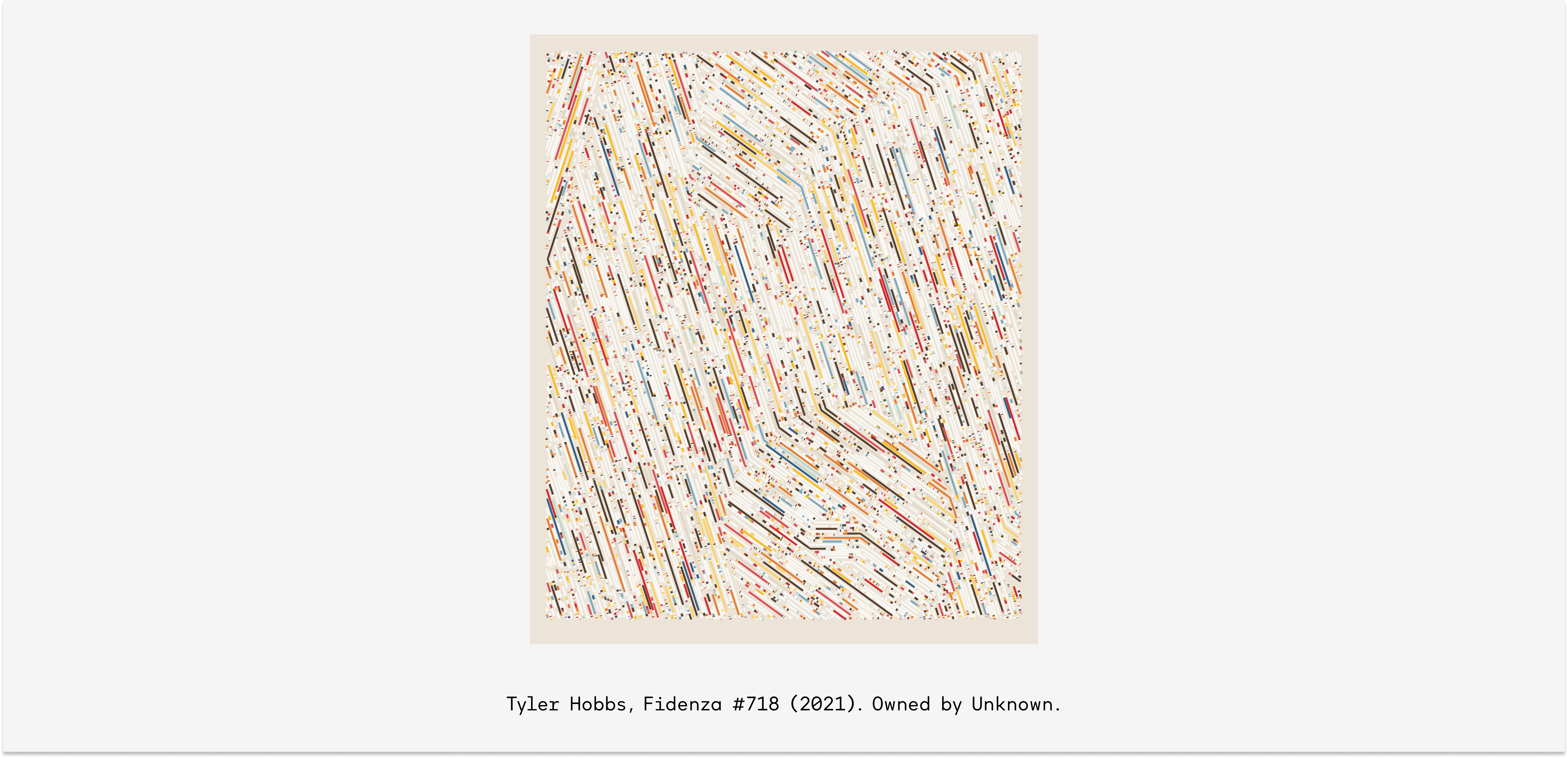
Fidenza’s approach to collision checking reflects a balance between control and chaos. Offering options ranging from strict collision checks to a more relaxed approach and even an “Anything Goes” mode, the algorithm presents a nuanced perspective on the role of constraints in creative coding. This resonates with the broader discourse within creative coding communities, where the interplay between structure and spontaneity is a constant theme.
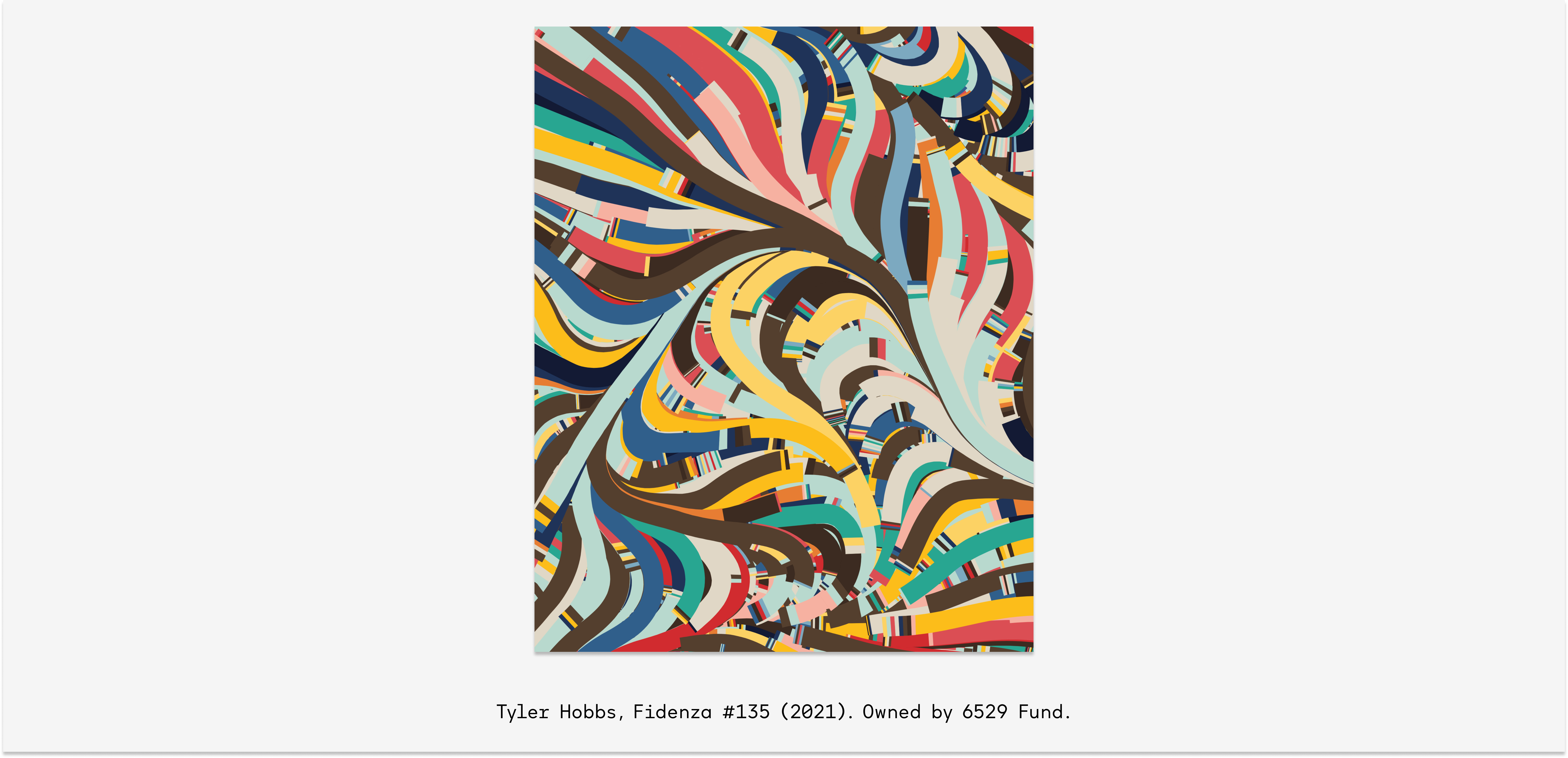
The inclusion of margin controls in Fidenza further emphasizes the algorithm’s consideration of negative space. This feature, alongside the diverse set of 14 probabilistic color palettes, adds layers to the creative process. The Luxe-Derived palette introduces an element of unpredictability, showcasing the algorithm’s willingness to embrace the unexpected. This mirrors the ethos of creative coding communities, where the iterative nature of coding often leads to surprising and delightful outcomes.
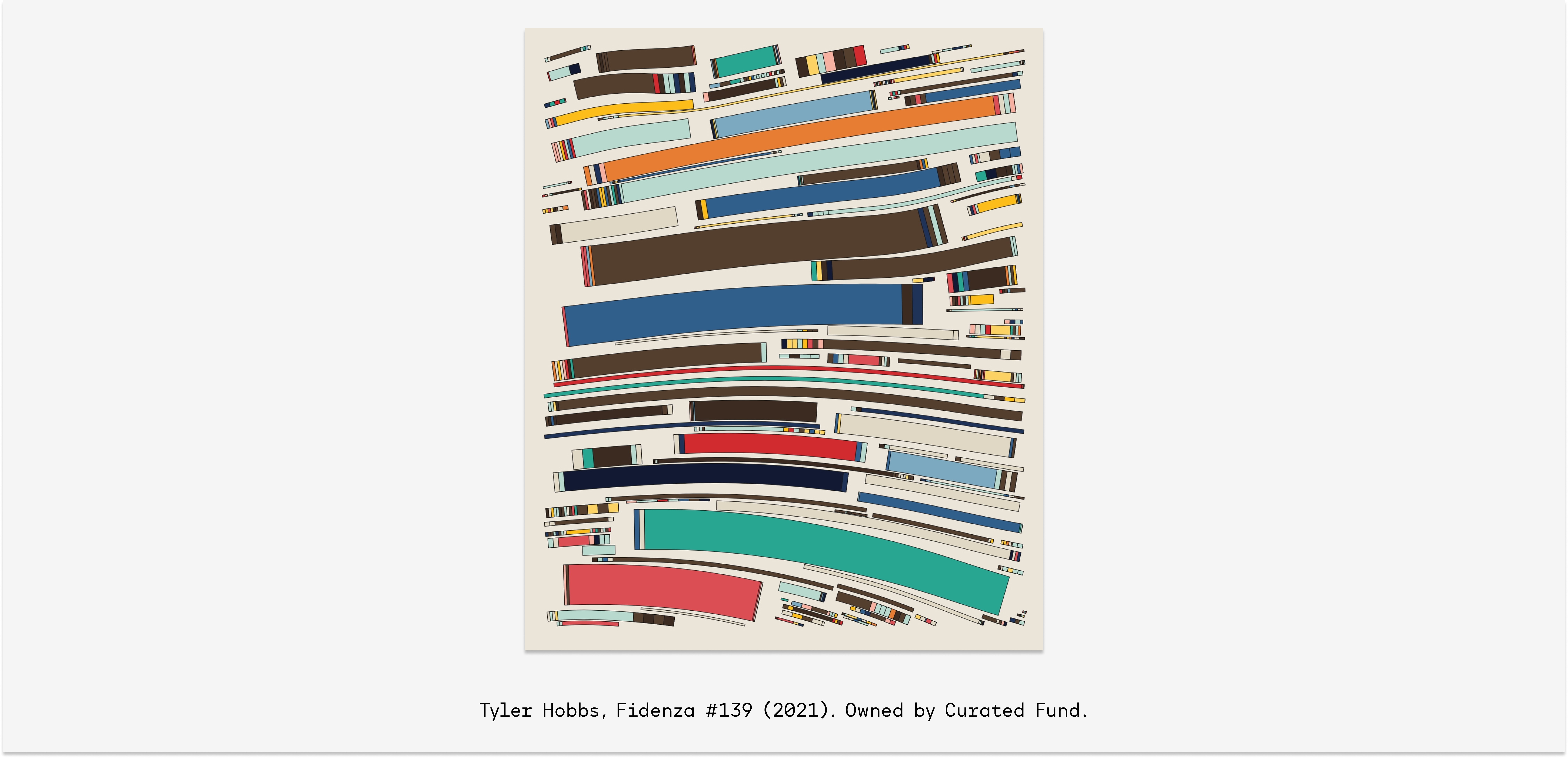
“Natural” Beauty
The intriguing quality of Fidenza lies in its complete lack of representation of nature, yet paradoxically, the work also possesses an affinity with it.
Formally, the outputs are completely abstract. There is no attempt to emulate, copy, or mimic nature.
Rather, the compositional principle of Fidenza precedes all representation, autonomously generating emergent forms. Fidenza’s strange new “artificial” beauty unveils its affinity with natural beauty, not rooted in verisimilitude per se, but in the process of generation itself.
Like the experience of natural landscapes, the serendipitous Fidenza compositions evoke an aesthetic satisfaction, as if there’s a trace of nature’s language in the seemingly most artificial form of art – code-based digital algorithms. Hobbs’ dialogue between human and machine suggests a shared commonality, an identity rooted in randomness that leads to a form of controlled variation present in both natural and artificial systems.
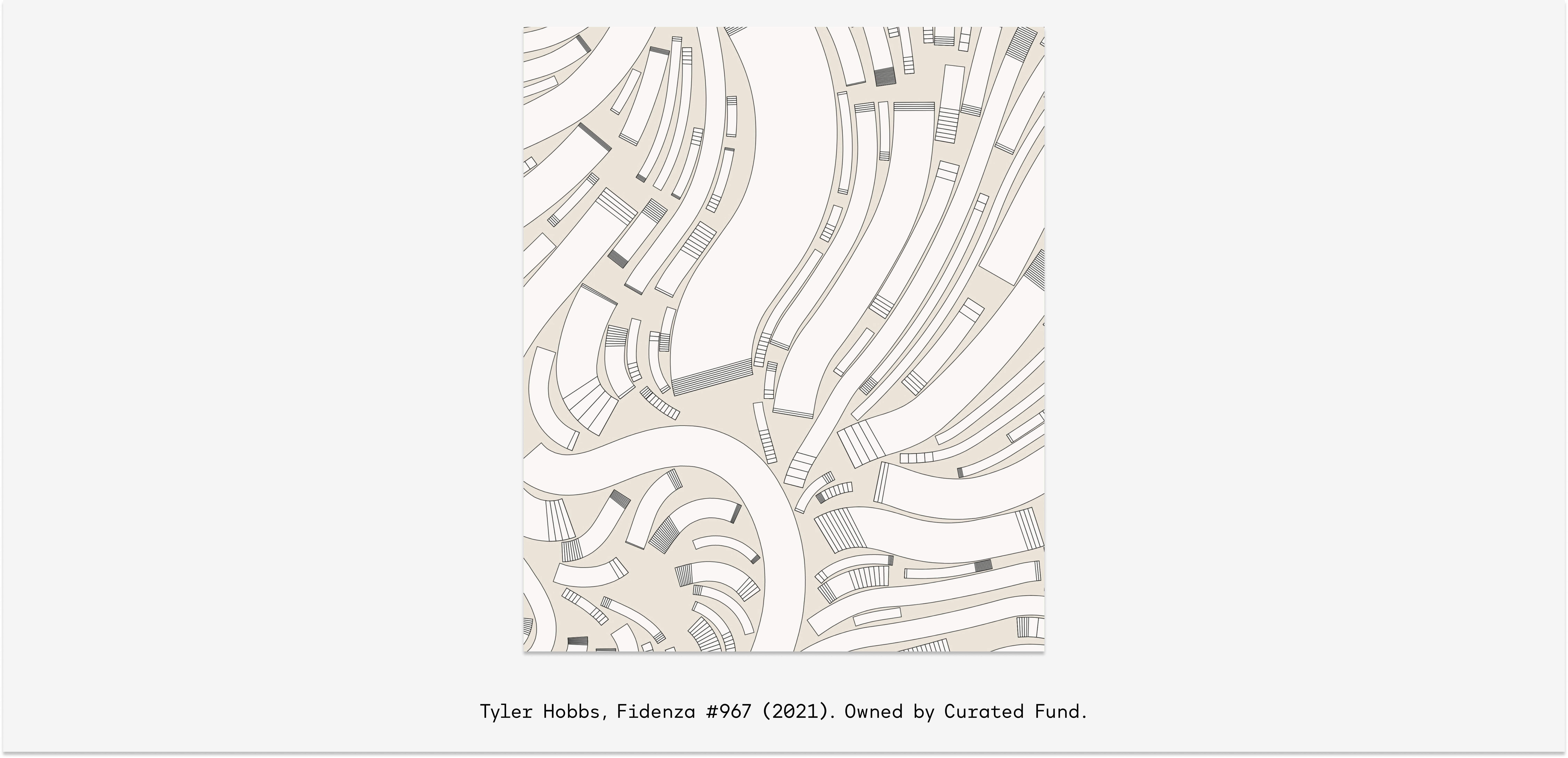
The classic distinction between art and natural beauty, conceptualized in the 18th century by the first theories of aesthetics, posits that while art is a product of human creativity and skill, natural beauty is inherently superior due to its unmediated and pure form.
This evaluation was later reversed, and natural beauty was generally considered irrelevant for the appreciation of art.
Code, which initially appears deterministic and binary, reveals its latent aesthetic potential and playfulness in Hobbs’s “other” application of it. Yet the art, Hobbs writes, is “the entire output space rather than the code.”2 Consequently, Hobbs is less concerned with the conceptual dimensions of code, focusing instead on its unique aesthetic sense.
Naturally, painters like J.M.W. Turner, Vincent van Gogh, Claude Monet, and Joan Mitchell have always remained captivated by natural forms, representing and imitating the formal language of nature.
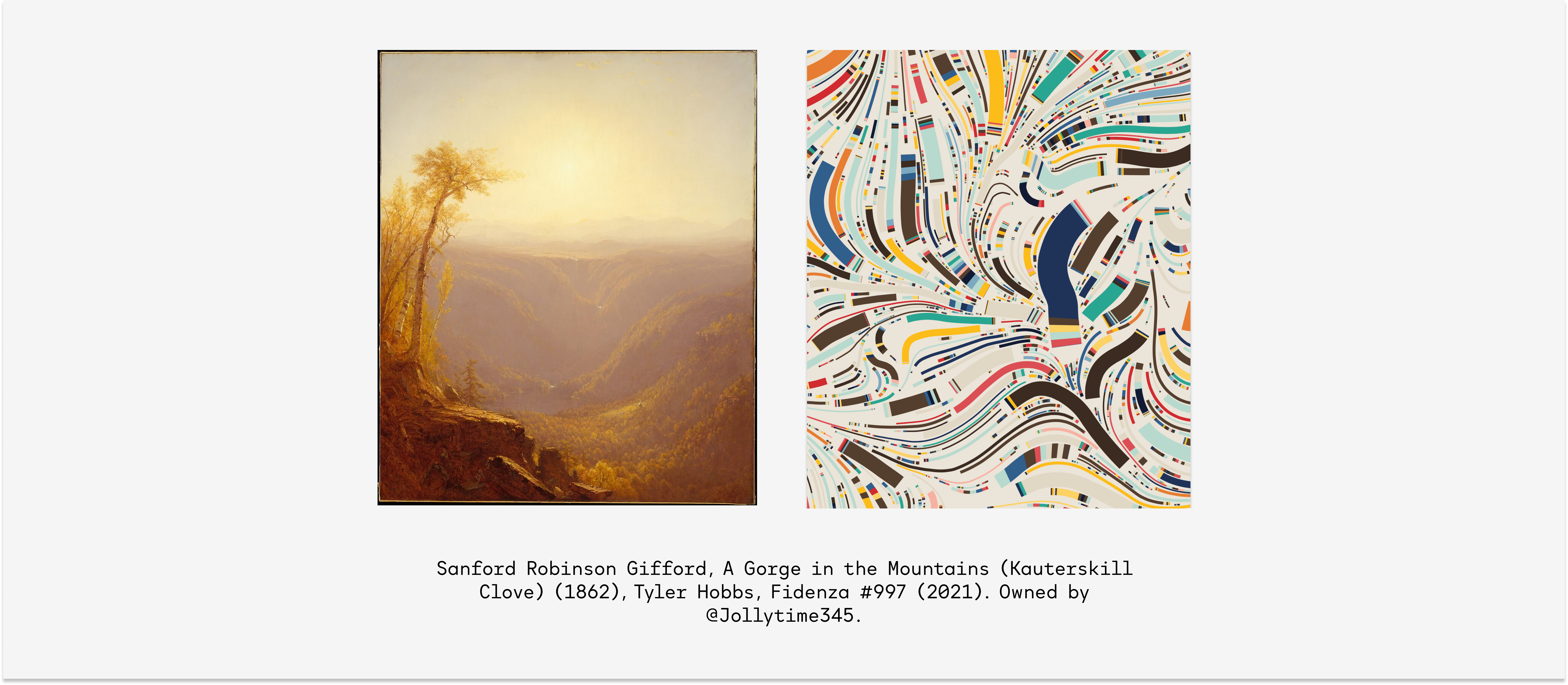
Fidenza explores the artistic potential of systems that play with, as Hobbs puts it, “the essence of what shapes our new digital worlds” – namely the rules and systems of code.
“The artistic exploration of code and how it can be re-imagined, re-examined, and re-purposed is critical if we wish to build a healthy, human experience in the non-physical landscapes to come.”3
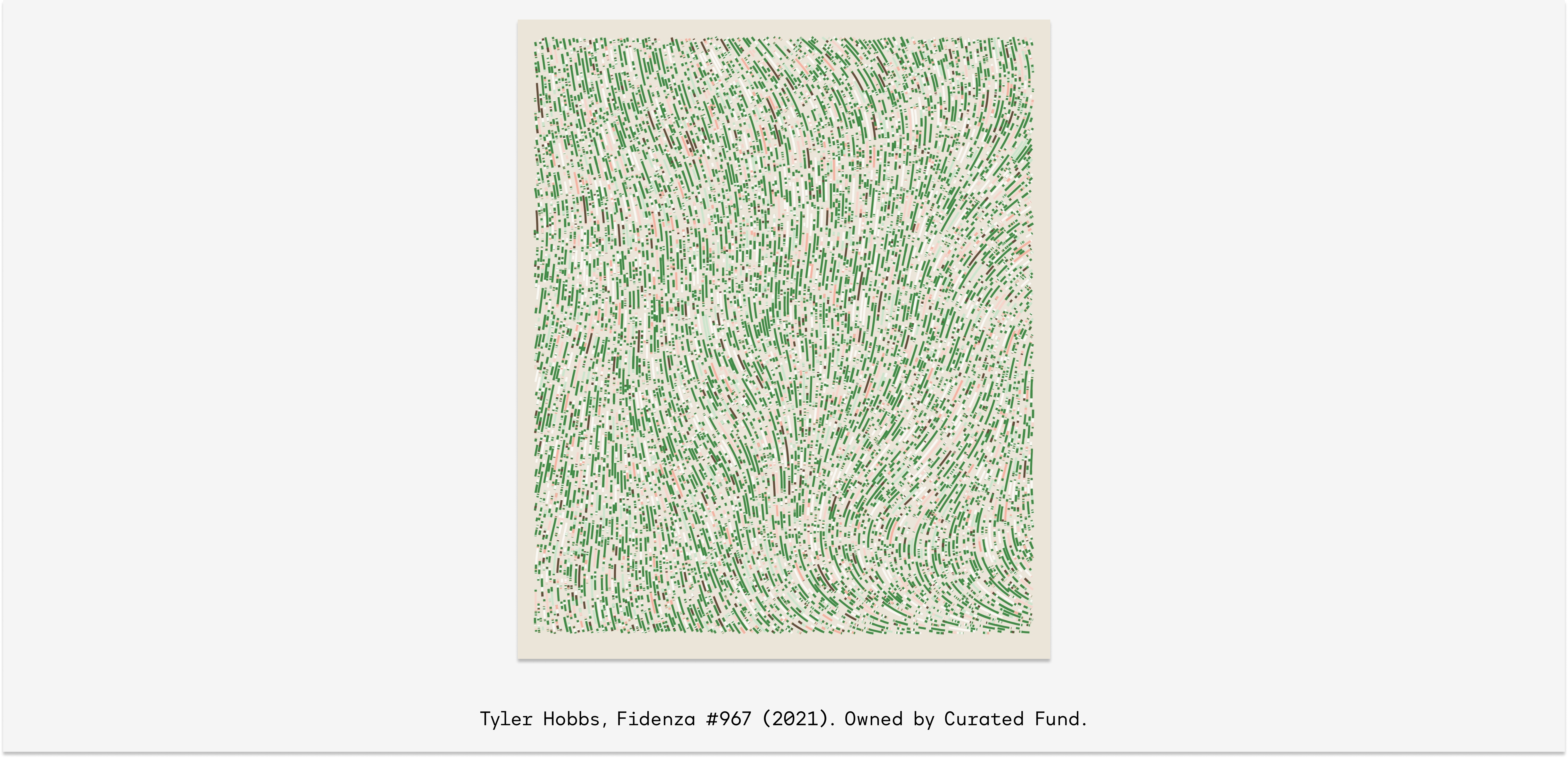
Further, Hobbs often draws parallels between natural landscapes and the experience of his code-based work:
“There tends to be a gap or a strangeness between what we’re used to in the natural world and the way in which computers behave. I think we have trouble relating to computers.”4
In this way, Fidenza, and Hobbs’ art more broadly, can be seen as an effort to integrate the intuitive, almost pre-conceptual experience of nature into our interaction with code and computers.
Finally, the unique experience that Fidenza provokes is that the work seems to stay intentionally on the aesthetic surface. There is an unmatched lightness that suffuses this work, a kind of pure aesthetic delight – similar to the experience of natural beauty – that stands in stark contrast to the often compulsory intellectualism prevalent in much of contemporary art.
Through this lens, it’s possible that part of Fidenza’s remarkable success is the collection’s clear, unapologetic, aesthetic joy.
Adventures in Provenance
At glitch, we believe that Fidenza’s technical mastery, paired with a storied history and critical provenance, renders this collection an imperative course of study.
Shortly after the release of Fidenza, widespread appreciation for the collection surged. A few months later, Fidenza #313, known as “The Tulip,” sold for 1,000 ETH (approximately $3.3M USD). In early 2022, hedge fund Three Arrows Capital established an entity called “Starry Night Capital” to focus on “assembling the world’s finest collection of NFTs.”
The fund spent unprecedented sums on the most popular digital objects of 2021, including Fidenza #479, the work on display this month at glitch Gallery.
In July 2022, Three Arrows Capital filed for bankruptcy due to excessive leverage and an absence of risk control. Later that fall, the fund’s liquidator announced that the Starry Night Portfolio would be auctioned off as part of the bankruptcy process. Included in the sale would be some of the world’s most valuable digital objects in the now defunct Three Arrows Capital collection – including several Autoglyphs (Larva Labs), “The Goose” Ringer (Dmitri Cherniak), a Zombie CryptoPunk (Larva Labs), among others.
It was announced that the sale would take place in 2023, hosted by renowned auction house Sotheby’s under the title “Grails: Property from an Iconic Digital Art Collection”. During the second part of the auction, Fidenza #479 went on to be acquired by Curated Fund, joining one of the most ambitious collections of digital art on the blockchain.
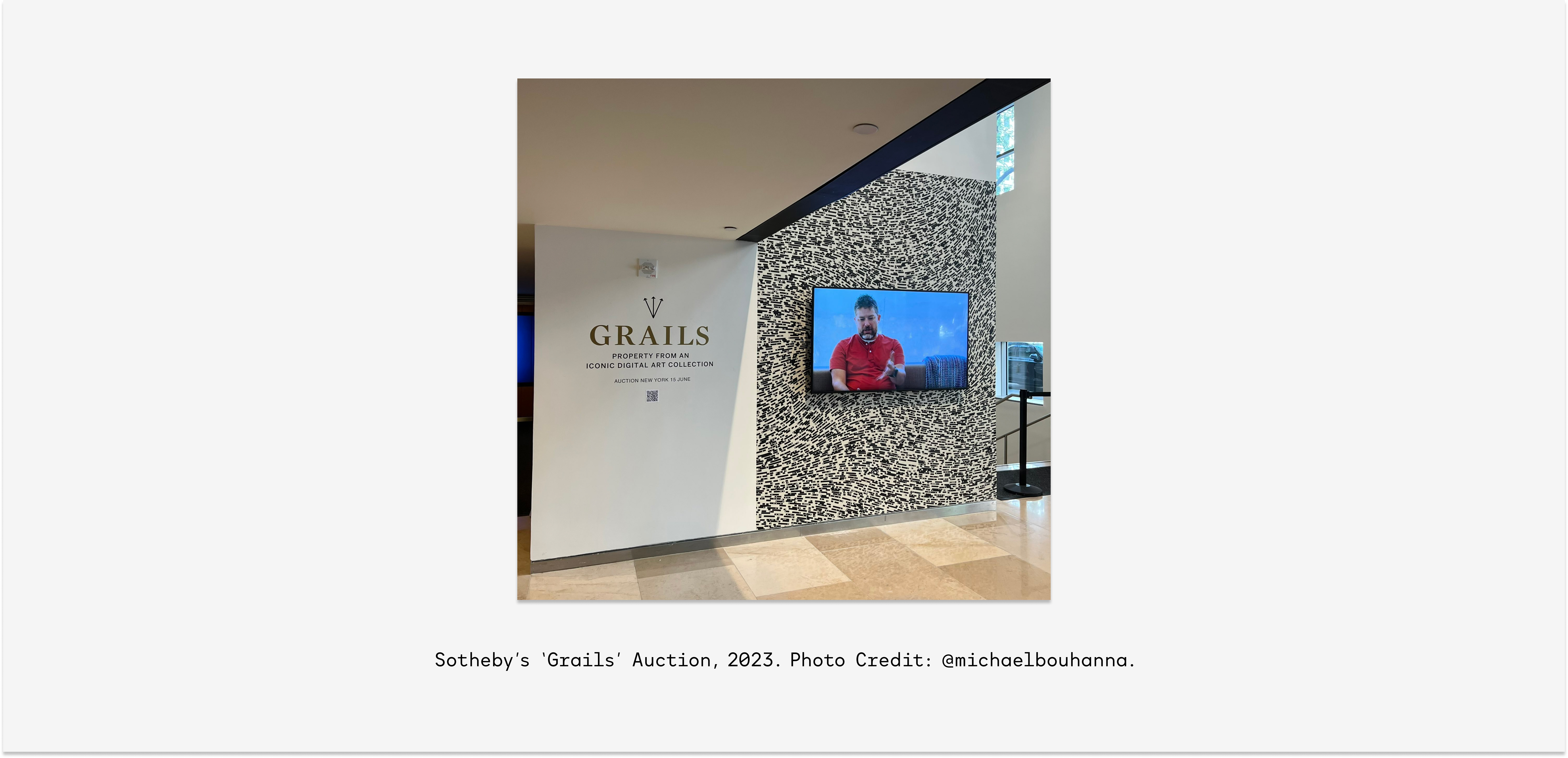
To date, Curated Fund has built one of the most thorough collections of digital art. The collection includes 24 Fidenzas, clearly curated to showcase the full scope of the algorithm, with a specific preference for rare works. Together with two other outputs, the micro-uniform Fidenza #479 forms a triptych in the monochrome subsection of the collection.
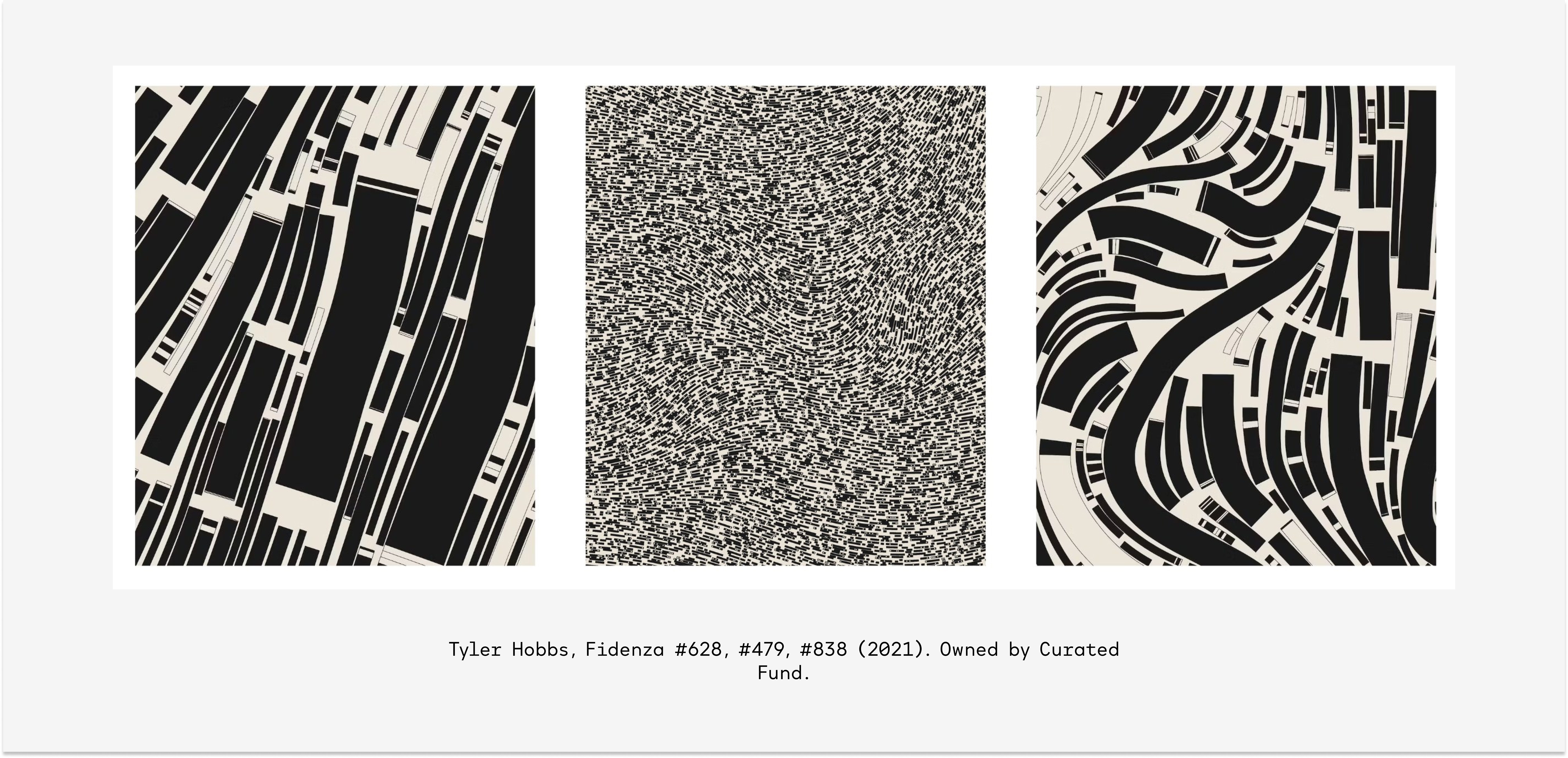
When asked about their approach towards collecting Fidenza, the fund’s founders explained:
“Collecting Fidenzas helped us refine our curatorial approach to collecting generative art algorithms. We always want to collect a set of artworks that are not only individually stunning, but together provide the best representation of a generative system. Each work we collect needs to be aesthetically pleasing. For Fidenzas, we value pieces that have good composition and balance. The majority of our Fidenzas have more common traits and fall squarely in the center of the algorithm. We’ve also been able to collect rarer edges of the algorithm, including white monos, unique palettes, spirals, and micro-uniform Fidenzas – including, of course, Fidenza #479, the black micro.”
Fidenza #479 is one of only two micro-uniform Fidenzas in the “Black” palette. The abstract composition displays a random distribution of small black and white rectangles that exhibit the typical flow field curve pattern, imbuing it with an organic feel.
The other two works in the diptych (#628 and #838) complement the piece as works with a “jumbo” scale and medium to low degrees of turbulence. Viewed together in a triptych, these works almost seem to evoke a sense of containment, as if the larger rectangles were details extracted from the micro-compositions.
Today, Fidenza stands as a pioneer on-chain generative art collection, as well as a testament to the evolving landscape of generative art history and creative coding.
Tyler Hobbs’ meticulous design choices, paired with the adaptability of the algorithm, exemplify the symbiotic harmony that can be achieved between machine and human. The interplay of technical precision and artistic intuition in Fidenza also reflects the broader trends shaping the future of creative coding, where artists leverage algorithms not just as tools – but as true collaborators.
-
https://www.rightclicksave.com/article/an-interview-with-tyler-hobbs-part-1 ↩
-
https://www.rightclicksave.com/article/an-interview-with-tyler-hobbs-part-1 ↩
-
Tyler Hobbs, “The Importance of Generative Art,” https://tylerxhobbs.com/essays/2021/the-importance-of-generative-art ↩
-
Quote from: https://outland.art/tyler-hobbs/ ↩
